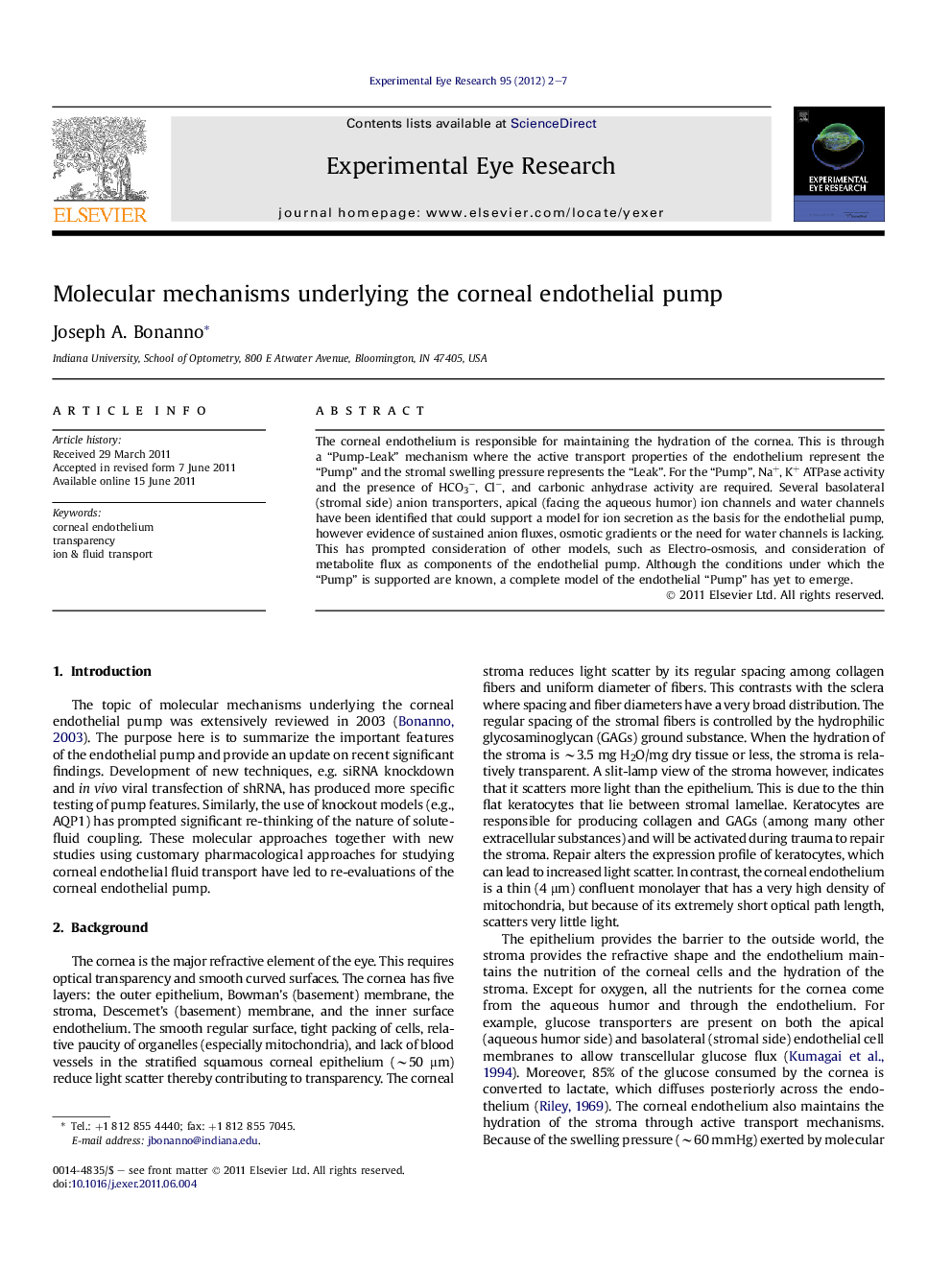| Article ID | Journal | Published Year | Pages | File Type |
|---|---|---|---|---|
| 4011436 | Experimental Eye Research | 2012 | 6 Pages |
The corneal endothelium is responsible for maintaining the hydration of the cornea. This is through a “Pump-Leak” mechanism where the active transport properties of the endothelium represent the “Pump” and the stromal swelling pressure represents the “Leak”. For the “Pump”, Na+, K+ ATPase activity and the presence of HCO3−, Cl−, and carbonic anhydrase activity are required. Several basolateral (stromal side) anion transporters, apical (facing the aqueous humor) ion channels and water channels have been identified that could support a model for ion secretion as the basis for the endothelial pump, however evidence of sustained anion fluxes, osmotic gradients or the need for water channels is lacking. This has prompted consideration of other models, such as Electro-osmosis, and consideration of metabolite flux as components of the endothelial pump. Although the conditions under which the “Pump” is supported are known, a complete model of the endothelial “Pump” has yet to emerge.
► Review of corneal endothelial pump function. ► Evidence supporting an anion transport based pump is limited. ► siRNA and shRNA approaches provide new insights on endothelial function. ► Evidence for alternate endothelial pump models including electro-osmosis & lactate flux.
